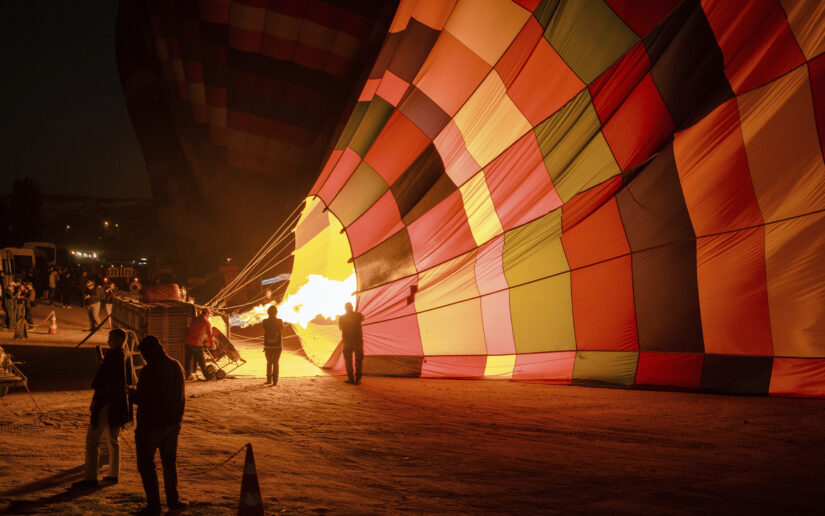Around the Earth in a balloon
Ten years ago, in 1999, for the first time in the history of mankind, a round-the-world balloon trip around the Earth took place. The most favorable time for the start of a round-the-world flight was considered to be from the middle of December to the end of February, when it is possible to catch a steady tailwind blowing over the planet in the upper layers of the atmosphere.
It was not without curiosities. On December 9, 1997, television stations in many countries showed a spectacular story: a huge balloon, caught in a sudden gust of wind, tore its slings and soared into the sky. Along with the two crew members, its pilot, the English multimillionaire and experienced balloonist Richard Branson, who had once flown in a balloon across the Atlantic Ocean and ventured around the world in the spirit of Jules Verne, also looked on disappointedly.
The French visionary, who wrote the novel Five Weeks in a Balloon more than a century ago, gave adventurers the idea of a long voyage in the air. He himself was inspired by a journalist and photographer, an adventurer and adventurer acquaintance, Felix Tournachon, whom the whole of Paris knew by the nickname Nadar.
In the early 1960s, when Jules Verne became friends with Nadar, he was busy raising funds and constructing a huge balloon of 6,098 cubic meters, which he called the Giant. Decade after decade, many have not abandoned their attempts to build new, more advanced balloons on which they have made ever more distant and high-altitude journeys.
Many have made new attempts to circumnavigate the Earth. Flying in groups and individually. In 1998, Steve Fossett set the flight record. He flew the entire gondola with propane tanks to keep the air in the shell heated longer on New Year’s Eve.
The failure of the built-in cockpit heating control system made a major change in plans. Having endured the cold, he decided to descend into the warmer atmosphere. After a while Steve signaled an emergency descent – the internal equipment proved to be less resistant to the low temperatures than the valiant pilot, everything finally failed, and the balloonist was forced to land near Grechanaya Balka farm, in the Krasnodar Territory.
Richard Rugan, the pilot who had circled the globe in December 1986 in an airplane designed by his brother, was not averse to repeating his achievement in the Global Hilton balloon, paired with David Melton. Their tandem lasted less than two hours in the air due to damage to the onboard helium tank.
The international crew of Bertrand Piccard of Switzerland, Beam Verstraeten of Belgium and Andy Elson of Great Britain turned out to be the 1998 record holder. Having soared to the skies in the Bratling Orbiter 2 balloon, they flew more than 20,000 kilometers with little fuss, but were forced to abort their journey. Caught in adverse weather conditions, the crew wasted a lot of fuel, circumnavigating dangerous areas, and eventually, due to a shortage of fuel, they landed in Burma.
A $1,000,000 prize was awarded by the Anheuser-Busch Brewing Company to whoever takes a balloon around the world. Aeronauts don’t go on a flight at all for the prize. Many invest a lot of money in the preparation of the expedition and believe that the pleasure of flying is worth the money spent.
One after another, crews from different countries set off, and one after another failed. The main duel this time broke out between the Europeans. Brits Andy Elson and Colin Prescott, who started from Spain on February 17, spent over 12 days in the air, breaking the world record of duration and range, but were forced to land due to lack of fuel.
Another balloon – Orbiter-3 – was launched on March 1 from Chateau d’Ee, Switzerland. Its commander was Bertrand Piccard, who had been preparing for the launch since last November. There were two reasons: unfavorable weather and absence of permission from Beijing for overflying the Chinese airspace.
The initial plan was to circumnavigate the Earth in 16 days, with the advantage of permission to fly over the southern part of China. However, the expedition was not easy. They had to take off in strong surface winds, without waiting for good weather, due to Bertrand’s great fear of missing the stratospheric currents. Immediately after liftoff they were carried toward Spain. By changing altitude, they were able to correct their flight direction and enter a cross-current over Mauritania, which carried them toward India, China, and across the Pacific to California.
